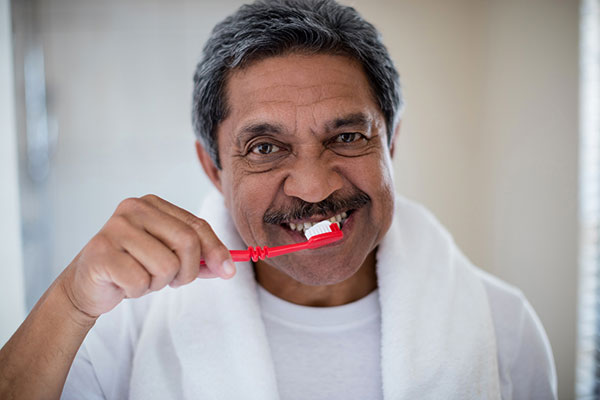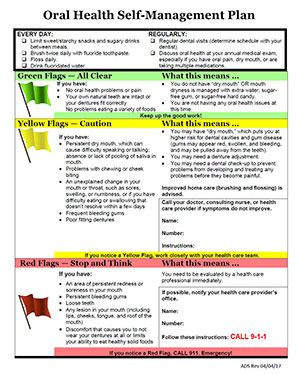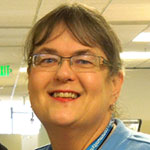Oral Health: Essential During COVID-19

The COVID-19 pandemic has impacted every aspect of our lives, including the closures of medical clinics and dental offices. COVID caused approximately 198,000 active dentists and dental specialists in the United States to close, thereby impacting both patients and dental practices.
The stress of the pandemic contributes to teeth grinding, teeth fractures, and temporal mandibular (jaw) joint disorder. Additionally, unhealthy eating and drinking habits affect oral health and mask wearing—which is essential during the pandemic—contributes to dry mouth.
Populations most vulnerable to COVID-19 include minorities, older adults, people with low literacy, rural residents, those in lower socioeconomic groups, and people who are uninsured—all of whom are at higher risk for complications, chronic diseases, and oral disease.
Common risk factors include stress; poor diet; alcohol and tobacco use; substance misuse; behavioral health issues; domestic violence; and poverty. Many of these factors have been heightened during the pandemic. These and other social determinants of health exacerbate chronic disease and poor oral health outcomes.

Tor download Aging and Disability Services’ Oral Health Self-Management Plan (available in English, Chinese, and Russian), click on the image above and scroll down to “oral health”.
The Centers for Disease Control and Prevention (CDC) notes that “non-Hispanic blacks, Hispanics, and American Indians and Alaska Natives generally have the poorest oral health of any racial and ethnic groups in the United States.” The same populations have disproportionately higher incidence of COVID-related infection and death.
Also, according to the CDC, more than 70 percent of Americans aged 65 and older have periodontal disease. Poor oral health is a risk factor in the initiation and/or progression of respiratory infections. Dental plaque can host respiratory pathogens that can be released in saliva and then can be aspirated in the lungs. Pathogens can also enter the bloodstream through bleeding gums in patients with poor oral health and then get into the lungs, causing a local infection.
Federally Qualified Health Centers (FQHCs) play an important role in providing dental services to underserved population at high risk of unmet oral health needs. About 6.4 million U.S. residents received dental care at an FQHC in 2018. Some centers responded to COVID-19 by deploying dental staff to frontline COVID-19 testing or triage roles. Some ended up furloughing staff, which further decreased access to care.
Another word of caution: With budget shortfalls, dental benefits are often the first services cut from Medicaid programs. When dental coverage is not available or accessible, low-income patients often defer getting dental care and utilize emergency departments to a greater degree.
Professionals in skilled nursing and assisted living facilities should pay special attention to oral health among residents, who may be less aware of oral health “red flags” like those listed below.
Primary care providers and dentists should tell their patients to watch for the following:
- Bleeding or swollen gums (healthy gums should not bleed during routine brushing and flossing)
- Pain (dental, gum or jaw)
- Persistent bad breath that is not related to something obvious (e.g., a food source)
- Sensitivity (excessive sensitivity to cold or sweet can be due to bone loss, root exposure, or cavities)
- Tooth mobility (in advanced stages of periodontal disease, teeth loosen and eventually fall out)
Due to the COVID-19 pandemic, new challenges may prevent the return to routine delivery of non-emergent care. Up-to-date recommendations for communications, protocols, and physical measures must be in place to resume safe patient care.
The pandemic offers an opportunity for the dental profession to shift toward non-aerosolizing, prevention-centric approaches to care and away from interventions. Some dentists have already embraced new technologies that further reduce airborne disease transmission.
What you should know:
- Some dentists will use tele-dentistry—“a combination of telecommunications and dentistry, involving the exchange of clinical information and images over remote distances for dental consultation and treatment planning.” Tele-dentistry includes the use of phone, photos, and videos to deliver oral health care and education. To engage in tele-dentistry, the patient must have a smartphone and Internet access.
- Dental practices conducting pre-appointment screening process via text, telephone, or e-mail to ensure that patients with symptoms consistent with COVID—or recent exposure to infected individuals—do not travel to the dental office.
- If you do go to a dental office, you will be asked to wear a face mask.
- Appointments will be staggered, as there is an extended time between patients, as necessary, to allow for proper cleaning and decontamination of examination rooms.
During COVID, some but not all oral health care can be postponed. Talk with your provider to see what is necessary and what might be postponed:
- Teeth cleaning or routine exam
- X-rays
- Treatment for things that do not hurt
- Teeth whitening
- Fixing cosmetic problems
- Routine check-up for braces
You should see a dentist if you have a dental emergency:
- Serious tooth or mouth pain
- Swelling around your mouth, gum, face, or neck
- Broken teeth, particularly if they cause pain or tissue damage
- Signs of infection (pain and swelling)
- Post-oral surgery care you cannot do yourself
- A temporary crown that is lost or broken
- Dental work related to cancer treatment
- Dentures that do not fit properly
- Wires in braces that hurt
We can take steps to take care of our oral health even if we don’t visit a dentist. Starting or keeping a twice-daily brushing routine, flossing daily, and staying hydrated are steps everyone can take towards good oral health, now and always.
 Contributor Mary Pat O’Leary, RN, BSN is a planner at Aging and Disability Services. She thanks Sheila Mary, a medical doctor and dentist from Haiti, who provided some of the content.
Contributor Mary Pat O’Leary, RN, BSN is a planner at Aging and Disability Services. She thanks Sheila Mary, a medical doctor and dentist from Haiti, who provided some of the content.
![AgeWise King County [logo]](https://www.agewisekingcounty.org/wp-content/themes/agewisekingcounty/images/logo.png)